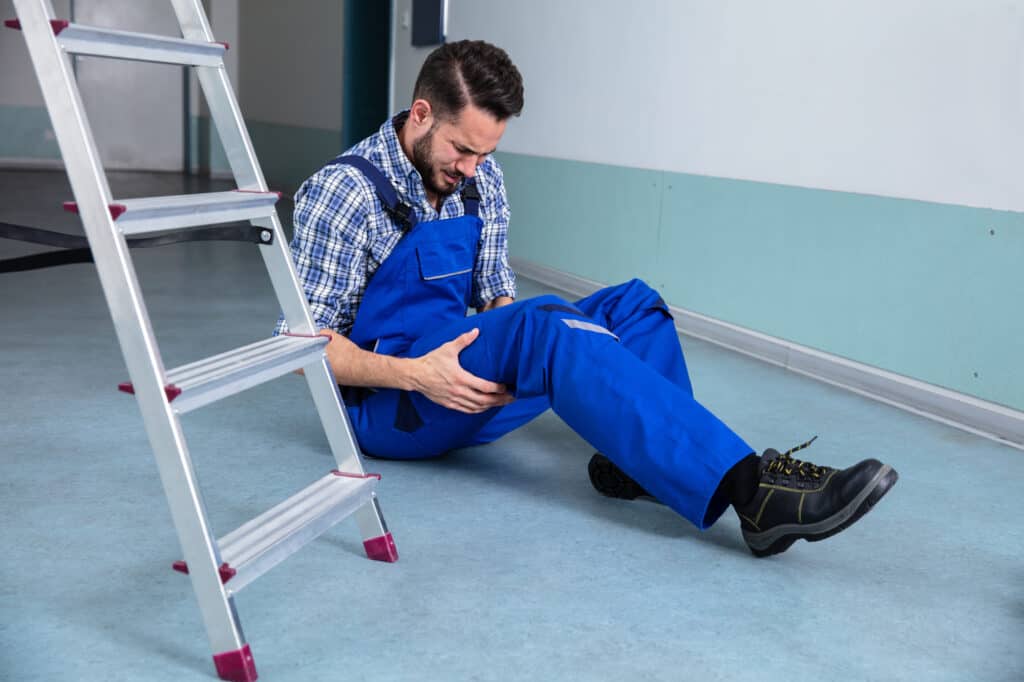Preventing Common Workplace Injuries
While accidents can happen despite our best efforts, many workplace injuries are preventable. Training, providing proper equipment, readily available guidance, signage, and sensible policies can help reduce your workplace’s accident rate, resulting in a happier, healthier, and more productive workforce.
According to data from RIDDOR in 2016/17, the most common non-fatal workplace injuries reported were:
- Slips, trips, and falls on the same level – 29%
- Lifting/handling – 22%
- Being struck by an object – 10%
- Falls from height – 7%
- Acts of violence – 7%
- Contact with machinery – 4%
- Striking against a fixed/stationary object – 4%
We’ll discuss how you can minimise the risk of some of these accidents occurring with the right health and safety equipment and guidance.
Slips, Trips, and Falls
These injuries can be caused by various things, including stray cables, floor obstructions, liquid spills, or smooth wet floors. When floors become wet or slippery, signs should be put up immediately to mark the danger, and spills should be cleaned up quickly. Chemical and bodily fluid spills require special equipment to clean up, such as body fluid disposal equipment for medical settings or universal spill kits for more general use. To help avoid other falls, work areas should be well-lit, cables should be covered with cable curbs, and stairs should be treated with proper care and attention.
Lifting and Handling
Incorrect or unsafe lifting and handling is a significant cause of workplace injuries, particularly to the back, shoulders, or joints. All staff members who regularly handle loads should be properly trained on safe lifting and carrying techniques. Workers should also be aware of environmental factors that can affect their ability to lift safely. Posting manual handling posters can serve as a constant reminder of the training.
Falls from Height
Falls from height are often preventable and can be fatal. Working at height should be avoided whenever possible, and when it is necessary, safe equipment should be used to prevent falls. Ladders should be secured in place, and fall arrest equipment should be used when necessary. Our safe working at height poster can help your workers implement safe practices.
Treating Workplace Injuries
While accidents can never be entirely eliminated, having an adequate level of first aid provision in the workplace is essential. Make sure that you have first aid supplies and trained staff on-site. You can browse a range of first aid kits and arrange for staff to undergo first aid training with Safety First Aid Training.

